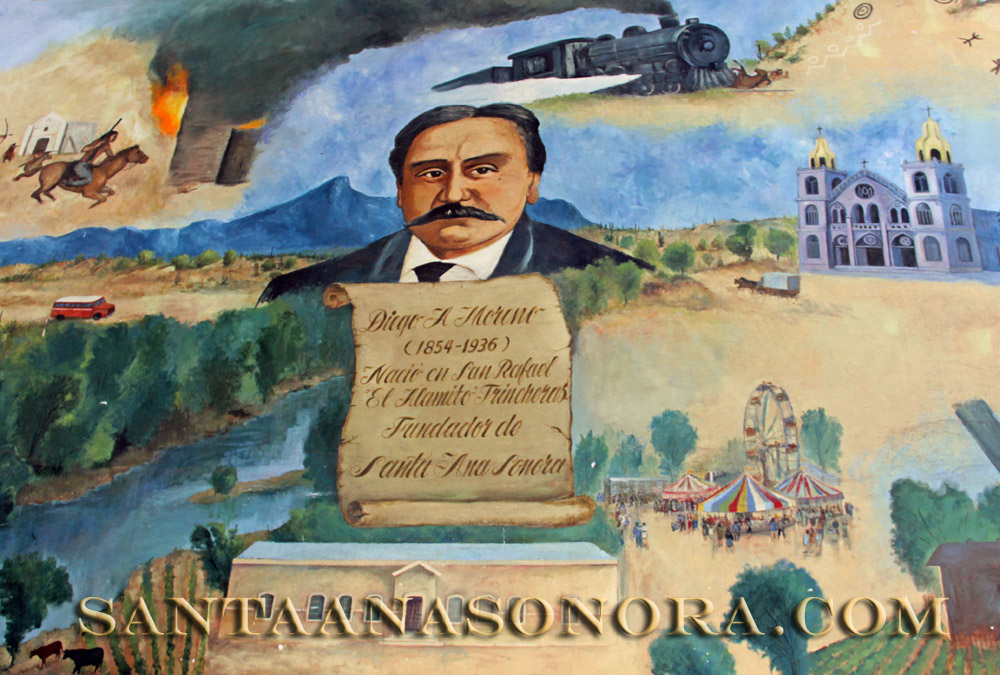History
The history of Santa Ana Sonora MexicoSanta Ana had its origins as a Pima Indian settlement along the Rio Magdalena, and in the late 1600’s, a mission church founded by Jesuit priests in the place now known as Santa Ana Viejo brought more Pimas to the area.
In 1883, Diego A. Moreno founded the “New Santa Ana,” just as the construction of the Sonora Railroad was beginning. What began as a small settlement along the railroad tracks grew, and on April 8, 1935 Santa Ana became a municipality. It was officially named as a city on April 16, 1943.
The original adobe Jesuit mission is long gone, and the current neo-Gothic church, Parroquía Nuestra Señora de Guadalupe, is located on the town plaza.
The mural pictured above depicts the historic development of Santa Ana. Pictured at center is Don Diego A. Moreno, who was born in nearby San Rafael “El Alamito” Trincheras.
To his left is the landscape of the area with a “Transportes Norte de Sonora” bus that provided transportation between the city and Caborca. On the right side is the city’s parish church, La Parroquia de Nuestra Virgen de Guadalupe. In the original mural, not included in the scope of the photo, is a depiction of Santa Ana’s first parish priest, Father Arnulfo Rivera.
In top center of the painting is the railroad that was all-important to the development of the city, traversing through a desert landscape with symbols of petroglyphs, rock art made by the earliest inhabitants of the region. To the left of the train is a scene depicting Apache raids from the earliest days of the town.
In the bottom third of the mural is a scene depicting the annual fiestas celebrated here, the Rio Magdalena flowing through verdant agricultural fields and past cattle, representing the importance of cattle raising and agriculture to the region. And in the bottom center of the painting is the city’s first school, named after Diego A. Moreno.
Lodging
Find a hotel in Santa Ana
Food
Find a restaurant in Santa Ana
Info
Information about Santa Ana

